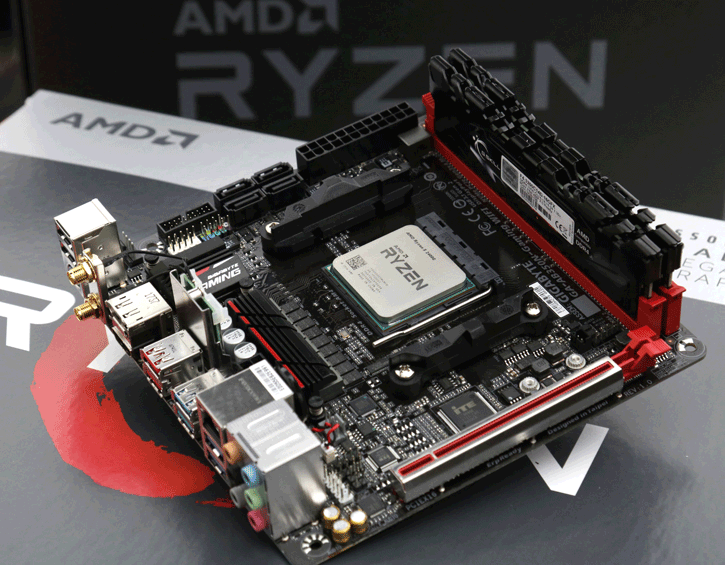Introduction
AMD Ryzen 3 2200G
A 99 USD four-core budget APU with a Radeon Vega IGP.
We peek at the 99 USD four-core Ryzen 3 2200G, an integrated Radeon Vega based desktop APU (Raven Ridge) that is priced very competitively, yet comes with a 3.5 GHz base and 3.7 GHz boost clock. Not bad, eh? AMD has been going strong with their processors, and now increases their market validity by adding a series of processors that have built-in graphics capabilities, APUs. If you do not need a heavy duty graphics card and merely use your PC for desktop stuff and perhaps a mild game here and there, hey... AMD surely has got a strong offering for you starting today. There's no need to purchase a dedicated graphics card. That means even more value for money as you receive mainstream to fairly high-end quad-core desktop performance for attractive prices. Now, if you have not heard or learned about the Ryzen releases in 2017, you must have been living under a rock; no worries, let's recap and compare a little on what you guys can expect. We'll start at the 'entry-level' with Ryzen 3 and 5 processors series lining up with Intel's Core i3 series. The difference, of course, is that Intel offers the Core i3 series as a dual-core part, and only recently started adding an SMT/HT version configured as 2 cores and 4 threads. They did that as they noticed what was coming from AMD. In a bold move AMD today launches the Ryzen 3 and 5 G series, with that G for graphics.
AMD has already announced the two APUs, which by the way are compatible with existing B350 and X370 motherboard with merely a firmware update. The first two models, Ryzen 3 2200G and Ryzen 5 2400G, that AMD has released are the first CPUs with embedded Radeon Vega architecture graphics. There are other notable features to mention as well, The APUs now have the official default support of DDR4-2933 in dual-channel operation. And for AMD faster memory is important for two reasons, the first being it reacts better to CPU bound gaming and, secondly, system memory is an elementary link for AMD's APU to get the highest performance possible. For integrated graphics, the memory cannot be fast enough as that system memory is used.
- AMD Ryzen 3 2200G with Radeon Vega 8 graphics
- AMD Ryzen 5 2400G with Radeon Vega 11 graphics
The APUs are developed under the codename 'Raven Ridge', it measures 209.78mm2 and has roughly 4.94 billion transistors. These are both quad-core processors; Ryzen 5 gets SMT (hyper-threading), thus the 2400G gets, with SMT enabled, 8-threads. The Radeon 2200G however just has four cores enabled and SMT (threading) disabled as AMD does not want to cannibalize their own Ryzen 5 series. The Ryzen 3 2200G and Ryzen 5 2400G APUs will be configured as single CCX configuration (4+0), a 'normal' Ryzen 5 1400 processor typically is confirmed as a 2+2 CCX configuration. With the G series you'll notice some other subtle changes, the base clock frequencies compared to regular Ryzen 3 and 5 are going upwards, the Ryzen 3 2200G, for example, will get a 3.5 GHz base clock with a boost to 3.7 GHz. The Ryzen 5 2400G, will take that up a notch and starts at a 3.6 GHz base-clock with a boost to 3.9 GHz. Keep in mind, and in comparison, the fastest clocked Ryzen processors are all clocking in at a maximum of 4.0 GHz, plus XFR range. So the APUs are pretty close to that as a theoretical threshold as well. Both parts are rated at a 65W TDP. There are more changes compared to regular Ryzen though, 4MB opposed to 8MB L3 cache, but the same 512K L2 cache per core. Also, PCIe lanes move from x16 to x8 lanes in the 'Raven Ridge' design.
Anyhow, this was just an introduction, let's head on over to the next page where we'll talk a little more about the architecture and then slowly but steadily dive into the benchmarks of the Ryzen 3 2200G.


